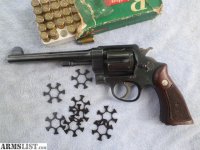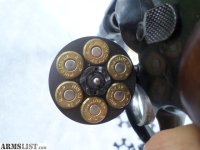holiday442
Member
Hi all. I have a chance to buy a model 455. The price is 500.00.
Following is the write up on the revolver. I really want another 1917 but this came up.
455 Mark II Hand Ejector 2nd model. Nice bluing and case colors. Really nice affordable S&W 5 screw revolver. A lot of history. Was purchased by Remington during WWI ( crossed pennants) and shipped to Australia, or New Zealand. ( No British proofs or Canadian broad arrows). It has the correct decommissioned stamps, X with vertical line through it, before it was returned. Factory cylinder to convert it to .45 ACP or .45 Auto Rim.
I will try to attach a picture of the gun.
Am I going wrong to buy this 455 at 500.00 or should I hold out for the 1917?
Thanks in advance.
Following is the write up on the revolver. I really want another 1917 but this came up.
455 Mark II Hand Ejector 2nd model. Nice bluing and case colors. Really nice affordable S&W 5 screw revolver. A lot of history. Was purchased by Remington during WWI ( crossed pennants) and shipped to Australia, or New Zealand. ( No British proofs or Canadian broad arrows). It has the correct decommissioned stamps, X with vertical line through it, before it was returned. Factory cylinder to convert it to .45 ACP or .45 Auto Rim.
I will try to attach a picture of the gun.
Am I going wrong to buy this 455 at 500.00 or should I hold out for the 1917?
Thanks in advance.
Attachments
Last edited:


